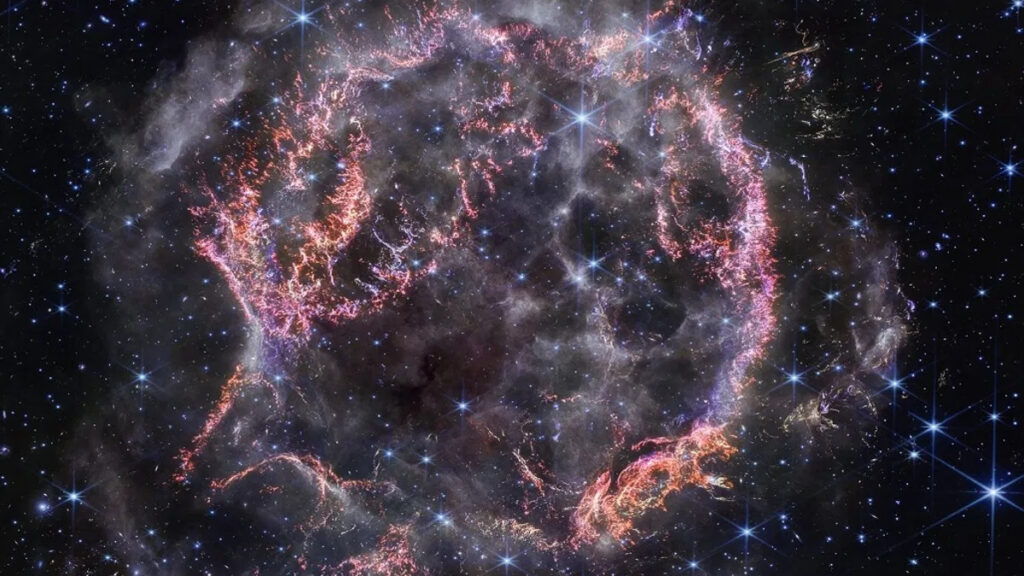We have a new perspective on one of the Milky Way’s most well-known exploding stars.
The James Webb Space Telescope has focused its golden light on Cassiopeia A, an amazing, intricate, and rapidly growing cloud of hot gas that is erupting from a star that humanity last witnessed go supernova in the 1670s. An astonishing amount of additional detail is revealed when infrared scanning is performed on the wisps and filaments of gas heated by the outward shocks.
Actually, this is the telescope’s second look at the well-known supernova. Using its MIRI instrument, the JWST conducted mid-infrared wavelength observations in April 2023.
This time, the orbiting observatory made near-infrared measurements using its NIRCam equipment, and scientists are baffled by the variations in the two photographs.
Situated around 11,000 light-years away from our solar system, Cassiopeia A is among the most extensively researched and well-known objects in our galaxy. Although multiple astronomers reported seeing it in the late 17th century, the supernova remnant itself wasn’t formally discovered until 1948, a long time later.

Furthermore, it would be strange if astronomers didn’t use the JWST, the most potent space telescope ever constructed, to have a look at Cas A.
Though it seems far more fleeting than earlier views in other wavelengths, the new near-infrared image aids in the understanding of the remnant’s dynamics. And there’s one very beautiful new addition. Scientists have named the striped blob in the image’s lower right corner “Baby Cas A” because it resembles Cas A’s offspring.
Although it seems to be near the supernova remnant, it is actually located some 170 light-years away. Furthermore, it isn’t a supernova per se; rather, it is the result of light from Cas A traveling through space and striking a far-off dust cloud, which illuminates it.
A handful of these light echos, as this phenomena is called, are shown in the updated picture.
The inner shell of the explosion is seen as ropy twists of vivid pinky-orange; these are clumps of gas and dust that contain components like sulfur, oxygen, argon, and neon that will eventually be absorbed into freshly formed stars.
Astronomer Danny Milisavljevic of Purdue University states, “With NIRCam’s resolution, we can now see how the dying star absolutely shattered when it exploded, leaving filaments akin to tiny shards of glass behind.”
“It’s really unbelievable after all these years studying Cas A to now resolve those details, which are providing us with transformational insight into how this star exploded.”
The portion of the remnant that is extending into interstellar space is the hazy outer shell. While it is too chilly to light up in the near-infrared, it is luminous in the mid-infrared. Synchrotron radiation, which results from electrons being accelerated in a spiral around magnetic field lines, is what gives the image its white light.

The reason behind a brightly lit, green-colored mid-infrared patch in the center-right of the bubble, which perplexed experts, is also disclosed. The area is dotted with what appear to be holes in the new NIRCam image, surrounded by white and purple to represent ionized gas.
It is currently believed by astronomers that the combination of light is the result of expanding supernova ejecta reaching and piercing the material released by the star before to its explosion.
This is by no means the last that we will hear about Cas A. It’s a special laboratory for comprehending these processes, and the more we observe it change, the more fascinating it will become.


